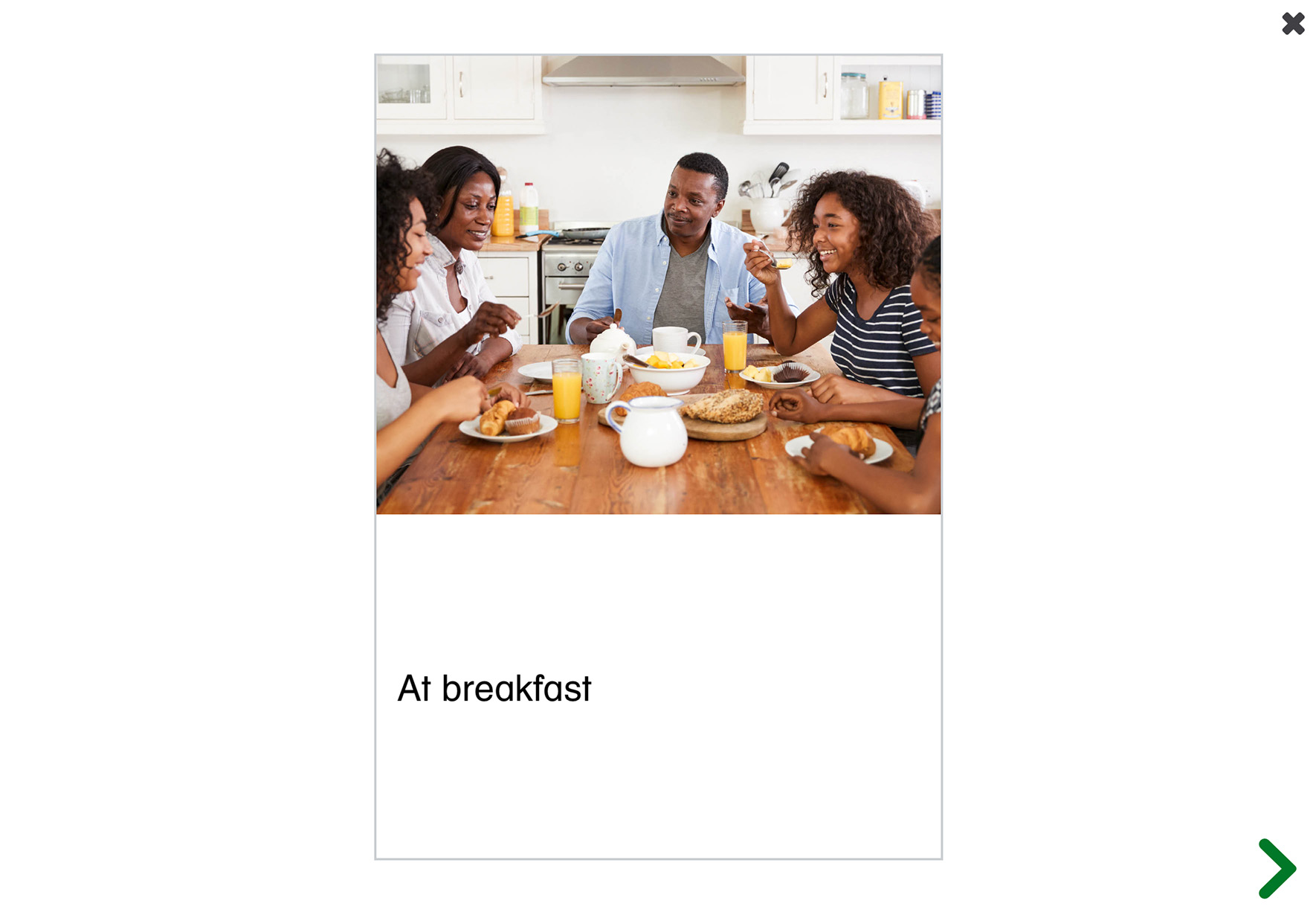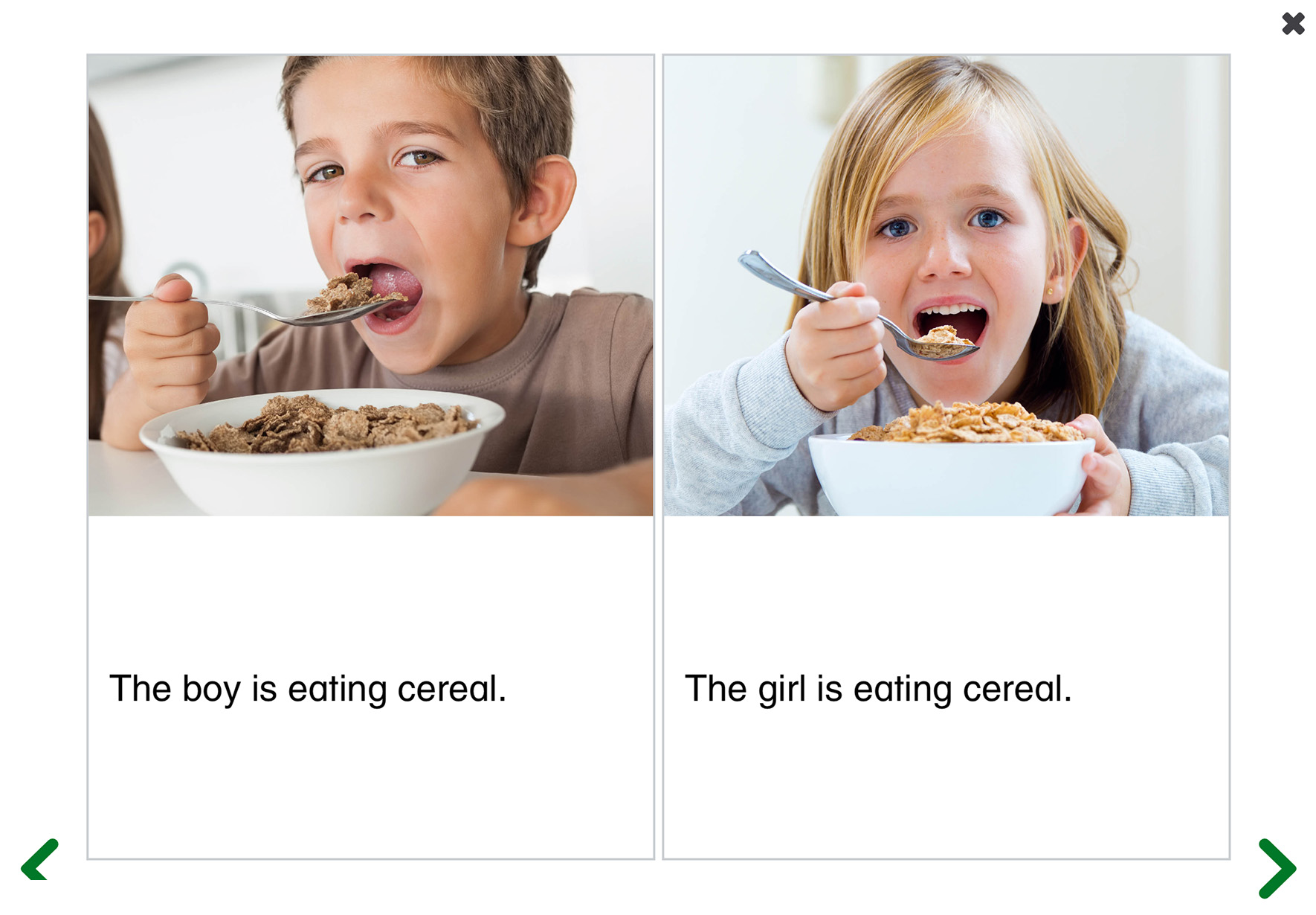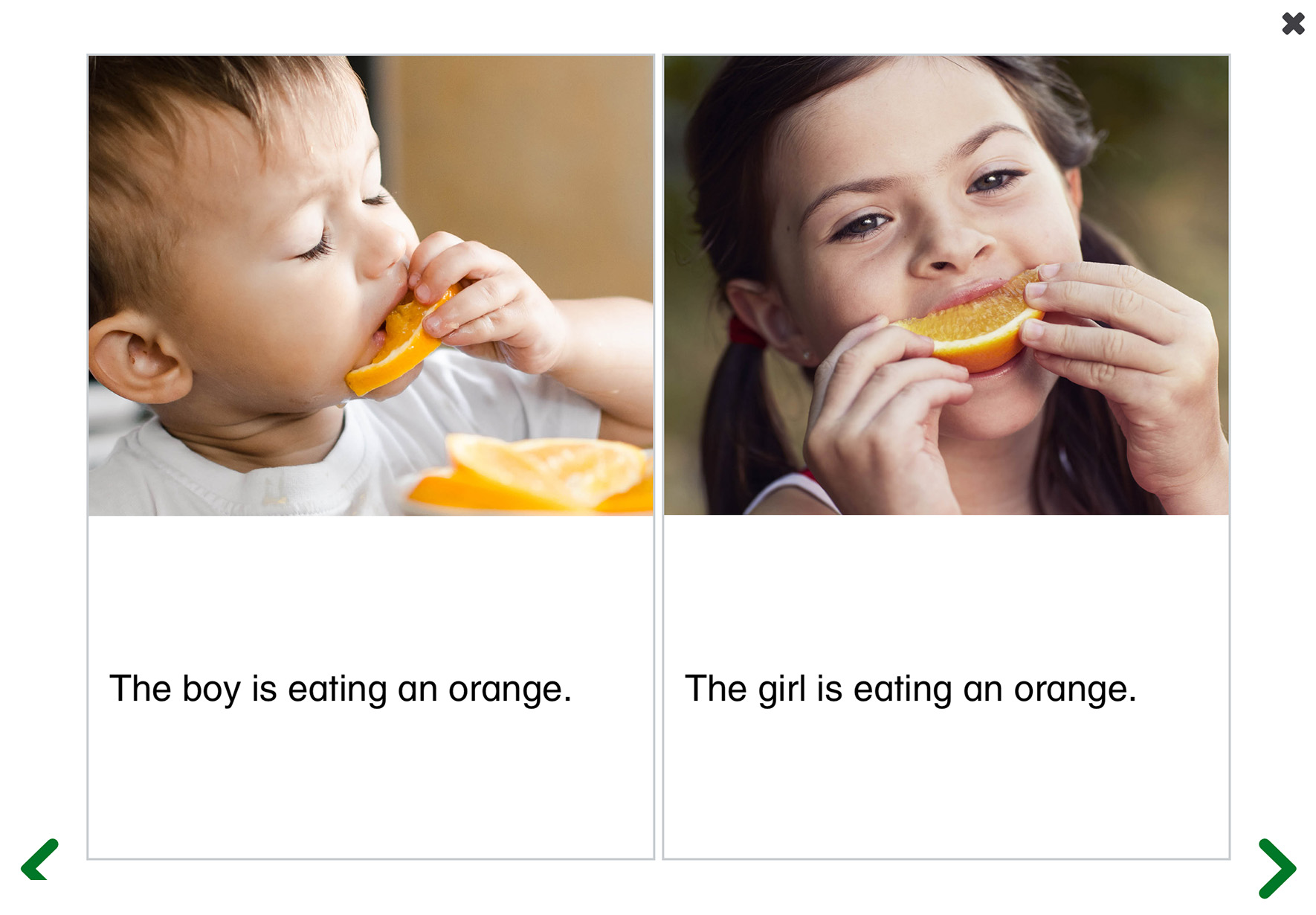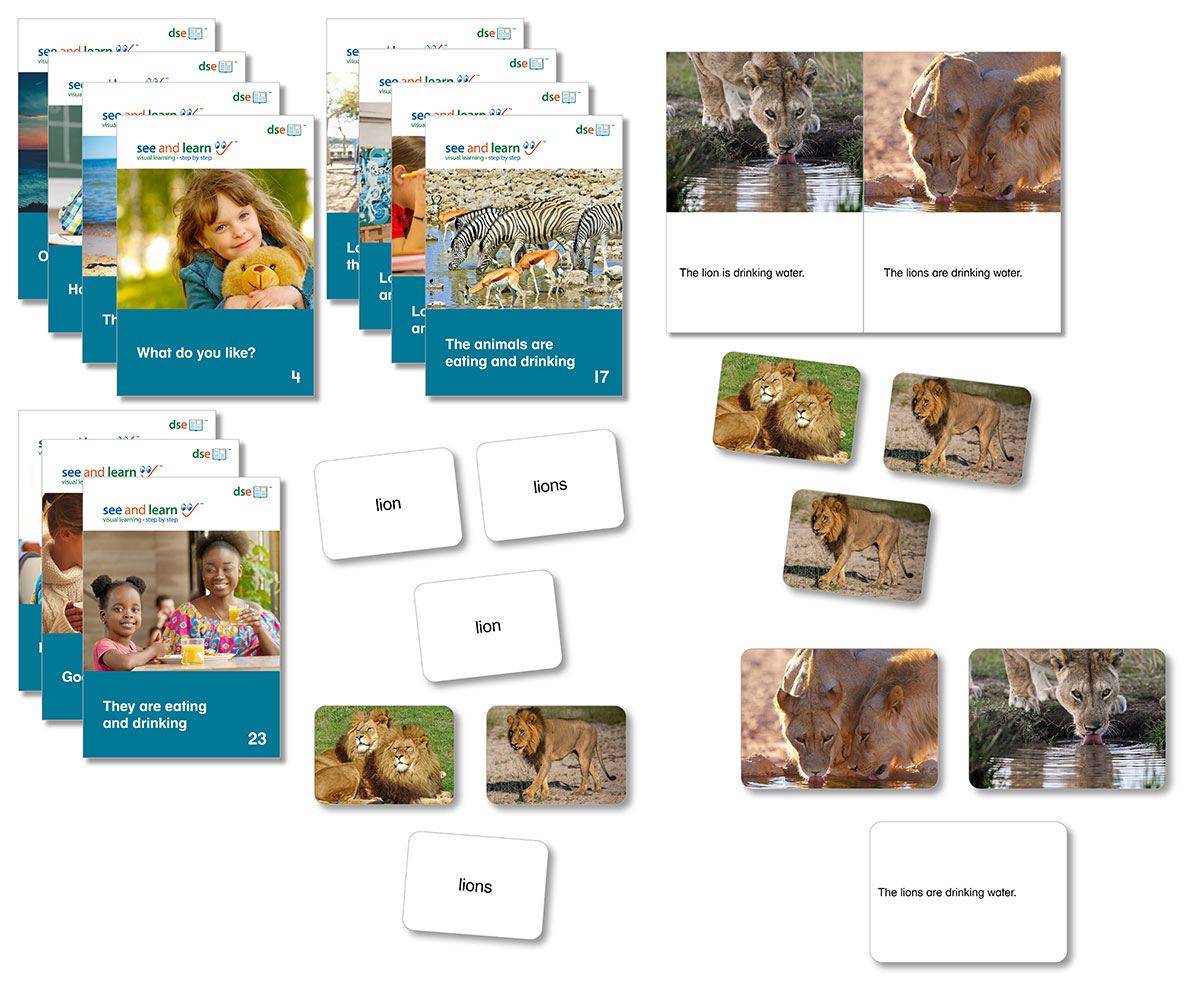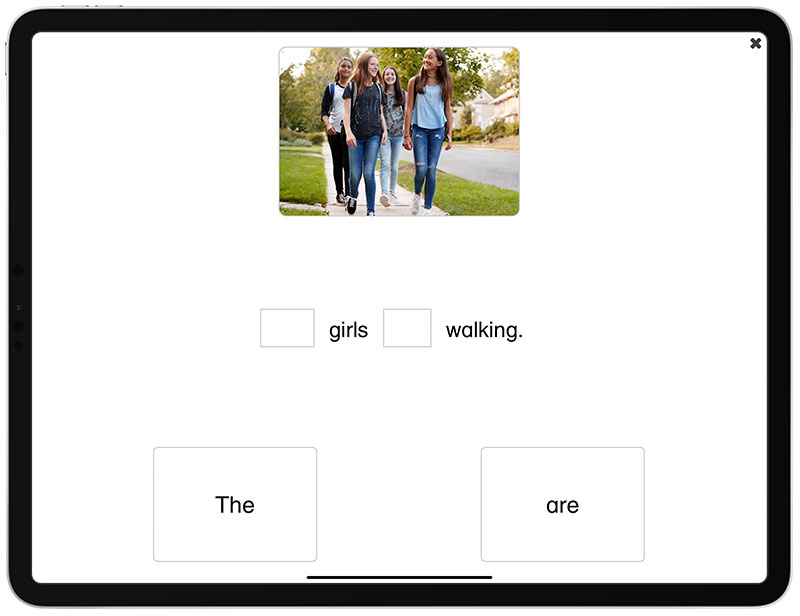Sentences 1
See and Learn Sentences 1 is the seventh step in See and Learn Language and Reading. It is designed to teach children new vocabulary, new written words and to use simple sentences when they talk.
See and Learn Sentences 1 uses written words to illustrate how spoken words can be put together. New written words are introduced in the context of reading picture books that illustrate the meanings of the sentences being taught.
The activities are intended to supplement natural, everyday opportunities to learn with the additional support that most children with Down syndrome need when they are learning to talk.
Learning goals
- Teach your child 174 words and sight words selected from the words commonly learned at this stage of development - including nouns, adjectives, verbs and prepositions
- Teach your child 277 sentences in 25 reading books - using the taught vocabulary and sight words with repetition of individual words and sentence structures
- Teach your child to use carrier phrases to encourage longer utterances, including "I am…", "I like…", "Here is…", "Look at" and "This is…"
- Teach your child use three-keyword sentence structures, including agent-action-object
- Teach your child to apply early grammar rules, including plural -s, plural is/are, personal pronouns (he/she/they/I)
- Introduce books that illustrate the meanings of phrases and sentences
- Teach your child to recognise written words and to distinguish between them
- Teach your child to link sight words with spoken words as you read to them and as they engage in matching activities
- Teach your child to see how written words can be combined to form simple sentences that convey meaning and to listen to how this corresponds with words being combined in spoken language
- Teach your child to see patterns in sentences that correspond to early grammar rules in language
- To practise saying words as your child reads them
- Test understanding of sight words and sentences through word/sentence to picture matching activities
- Encourage your child to pay attention and engage in teaching activities for moderate periods of time
Features
- Designed to build on the children's relative strengths in visual processing and to minimise working memory demands
- Designed to advance in small steps and offer lots of opportunities for practise and consolidation
- Pre-selected vocabulary that is developmentally appropriate for children at this stage of language development
- 25 carefully structured and graded short books that are taught in sequence to introduce new vocabulary and grammar and to rehearse and consolidate vocabulary and grammar previously taught
- 433 bright, clear photographs providing natural and realistic representations of new vocabulary and sentences
- 10 teaching activities: Reading Books, Matching Pictures, Selecting Pictures, Naming Pictures, Matching, Sight Words, Selecting Sight Words, Reading Sight Words, Understanding Sight Words, Understanding Sentences, Building Sentences
- Simple design to avoid distraction and focus attention on the learning tasks
- A detailed guide with step-by-step instructions
- Record forms to track your child's progress and plan the teaching activities
- Resources for teaching in any English dialect (optional spoken prompts are included in the app editions with UK and US accents)
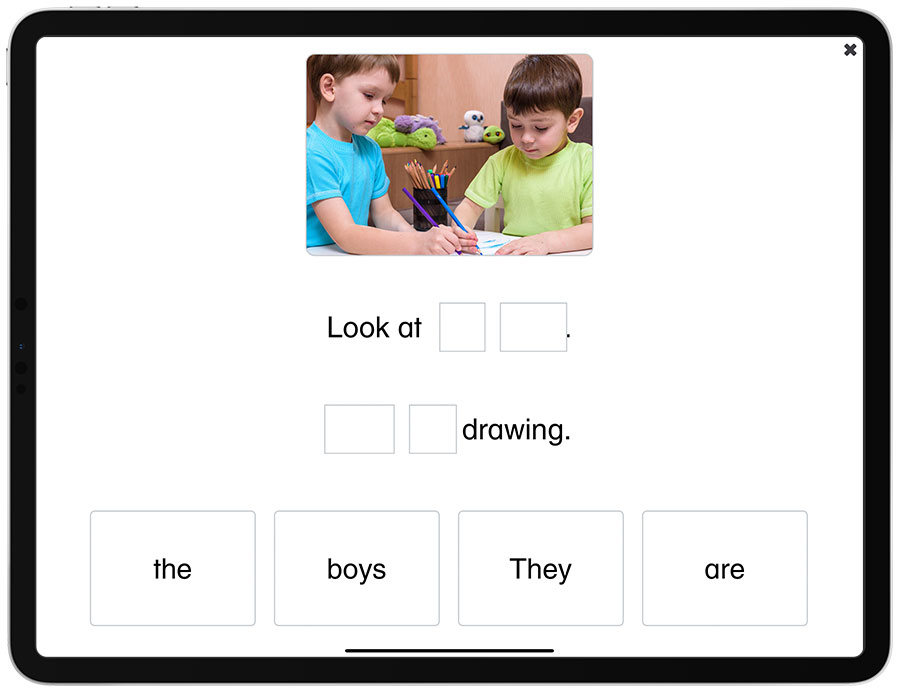
When to start
See and Learn Sentences 1 is suitable for children who:
- understand at least 150 words
- can say or sign at least 60 of the words that they understand
- use at least 10 different two keyword phrases when talking (or signing)li>
Children who have completed the activities in See and Learn Vocabulary 1, 2 and 3 and in See and Learn Phrases 1, 2 and 3 will be ready to start the activities in See and Learn Sentences 1.
Many children with Down syndrome will reach this stage by about 4 years of age, but rates of progress vary widely - some children will reach this stage earlier (perhaps from around 30 months), some later (perhaps not until around 8 years).
See and Learn Progress Tracker
Our online progress tracker is coming soon.
Use it to monitor and support your child's development, with advice on activities and strategies to promote development, and guidance on which See and Learn steps may be able to help.
Next steps
Children who have learned the sight words and phrases in See and Learn Sentences 1 are ready to continue learning more vocabulary, sentences and grammar rules.
See and Learn Language and Reading teaches the meaning of spoken words and encourages children to practise saying new words. It is designed to be used alongside See and Learn Speech which includes activities to encourage clearer speech.
We recommend that children with Down syndrome receive additional, structured language and reading support in school.
The Reading and Language Intervention for Children with Down Syndrome (RLI) is an evidence-based teaching programme designed for children with Down syndrome aged 5 to 11 years. RLI was evaluated in schools in a randomised controlled trial and found to improve average rates of progress compared to ordinary teaching.
Learn more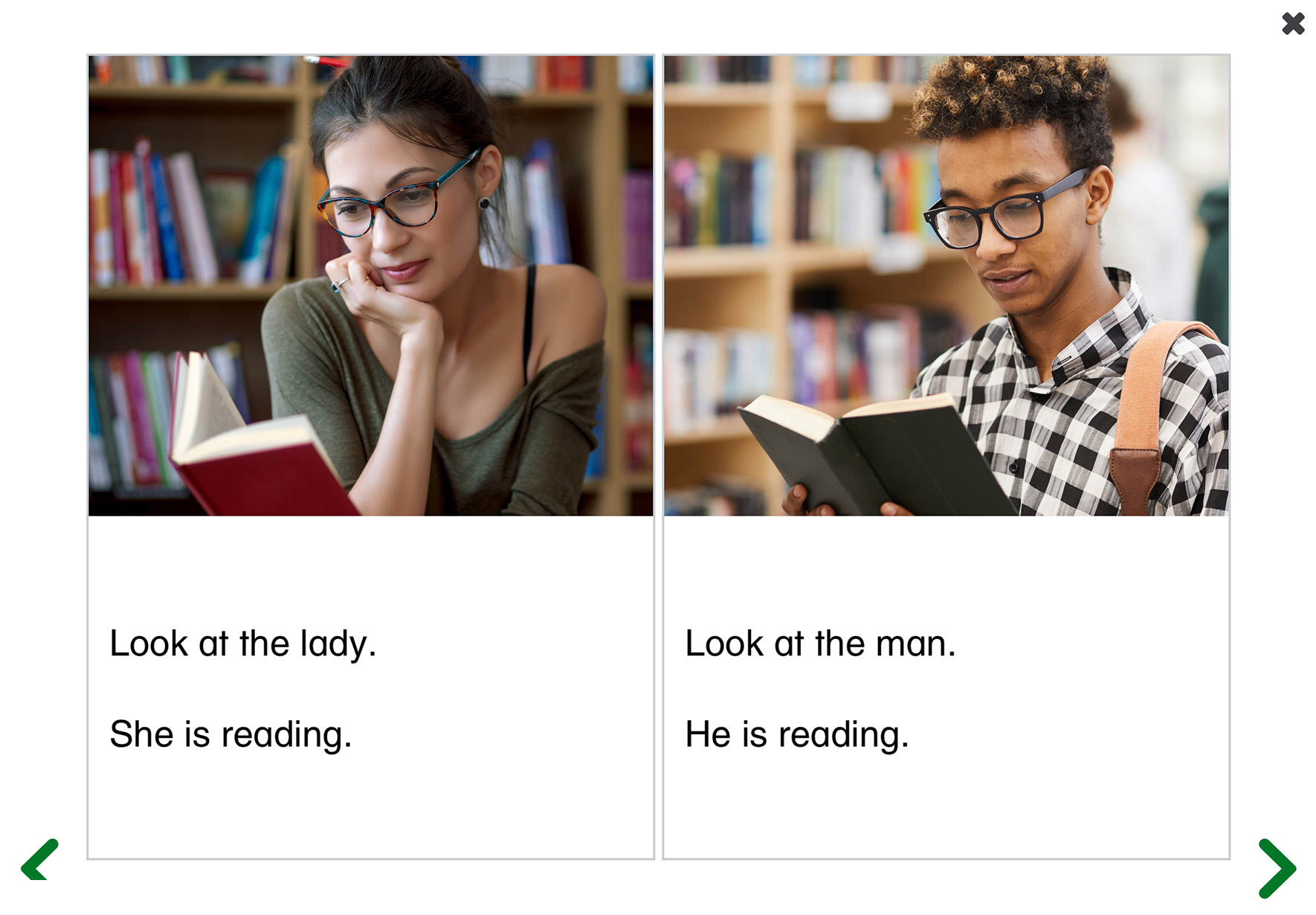
How to buy
See and Learn Sentences 1 is available as a printed kit or as an app for Apple iPads.
